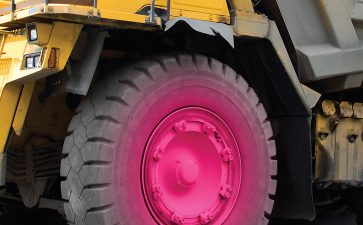How Often Should Run Flats Be Rotated?
Owning and maintaining a vehicle can be a lot of work. Whether it’s your first car, family car, or a historical vehicle you only take out on special occasions, keeping it in top shape is crucial to keeping it performing well and looking good.
Rotating your vehicle’s tires is part of vehicle ownership and regular maintenance. This measure helps to keep your car running smoothly, and may even be required to keep your tires covered under warranty. But seeing that some tires work differently to others, you may be wondering if they all need to be rotated, and if so, how often.
This article looks at and answers the question: How often should run flats be rotated? For personalized advice, contact our team at Carlisle TyrFil today.
What Is Tire Rotation?
While you know what each of these words mean separately, putting them together can create some questions. The tires rotate every time you drive because that’s how they work, so what exactly is tire rotation if it’s not that?
Tire rotation is where you change the position of each tire on your vehicle. This means taking the tires off the wheels and placing them on different wheels, for example, moving the tires on the front wheels to the back and vice versa. This is done periodically throughout the tire’s lifespan, and most people have this done during a routine inspection and maintenance visit, for example, when also getting the oil changed.
Why Is It Important To Rotate Tires?
- Wear And Tear
When your vehicle has been running on the same tires for a period of time, every wheel develops a different wear pattern. The tires on the front wheels tend to wear faster due to how these wheels bear more weight and because they’re responsible for steering and braking. Rotating the tires from the front to the back gives them more of a break and lets the original back tires take over, helping to prolong the life of all four tires.
- Inspection
Rotating tires allows you to visually inspect all areas of the tire for damage, and to rectify any that you notice. You can also check their air pressure and tread depth, and have them rebalanced if you’ve noticed any vibration.
- Better Handling
Uneven wear and tear on your tires can lead them to perform worse over time. By rotating your tires as necessary, you can better maintain your vehicle’s handling and performance and ensure its tires have the best possible grip on the road.
- Save Money
Not rotating your tires as needed will cause one set (generally the front) to experience wear and tear faster than the other set. This can lead to expensive replacements, sometimes without you knowing they need replacing until the last minute, which may be a financial concern for some.
- Safety
Worn tires can be dangerous, especially in wet or slippery conditions. By rotating your tires, you can ensure that they wear evenly and can provide the best possible traction on the road.
- Warranty Requirements
Whether it’s by your tire manufacturer, vehicle manufacturer, or both, it’s likely to be a requirement to rotate your tires as needed to maintain your warranty. If you don’t rotate them as required, this could void your warranty and potentially lead to a costly claim.
Why Is It Important To Rotate Run Flats?
Rotating run-flat tires is much the same as rotating any other type of tire, as this helps to give drivers additional safety and prevent damage and costly repairs. While run flats are designed to run for longer periods of time than regular tires should they be punctured, they can still wear unevenly and therefore require regular rotation for all the same reasons.
How Often Should Run Flats Be Rotated?
The general rule of thumb is that tires should be rotated every 5,000 to 7,500 miles. However, how often you’ll need to rotate them depends on a variety of factors including how you drive, whether your car has two-wheel-drive or all-wheel-drive, and the weather conditions since their last rotation.
When it comes to run flats, they generally need to be rotated every 3,000 to 8,000 miles. The significant difference is due to different manufacturers having different specifications and recommendations to each other. Additionally, there may be different recommendations depending on the model. If you’re unsure how often your specific run flats on your vehicle should be rotated,
Read related news: Do Run-Flat Tires Go Completely Flat?
Carlisle TyrFil: The Global Leader
Rotating your tires— including run flats— regularly as per your manufacturer’s requirements will help to wear them evenly, giving you peace of mind that your tires are as safe as they can be. With better handling and performance, you can rest assured that you’re getting your money’s worth from your tires and that you’re maintaining your warranty.
If you have any questions about tire rotation, run flats, or anything else tire-related, our team at Carlisle TyrFil is the one to turn to. With a combined 500 years of experience, we’re proud to be a global leader in tire fill and known throughout the world. To upgrade your tire knowledge, contact our knowledgeable team today.

